23 February 2024
![]() 4 mins Read
4 mins Read
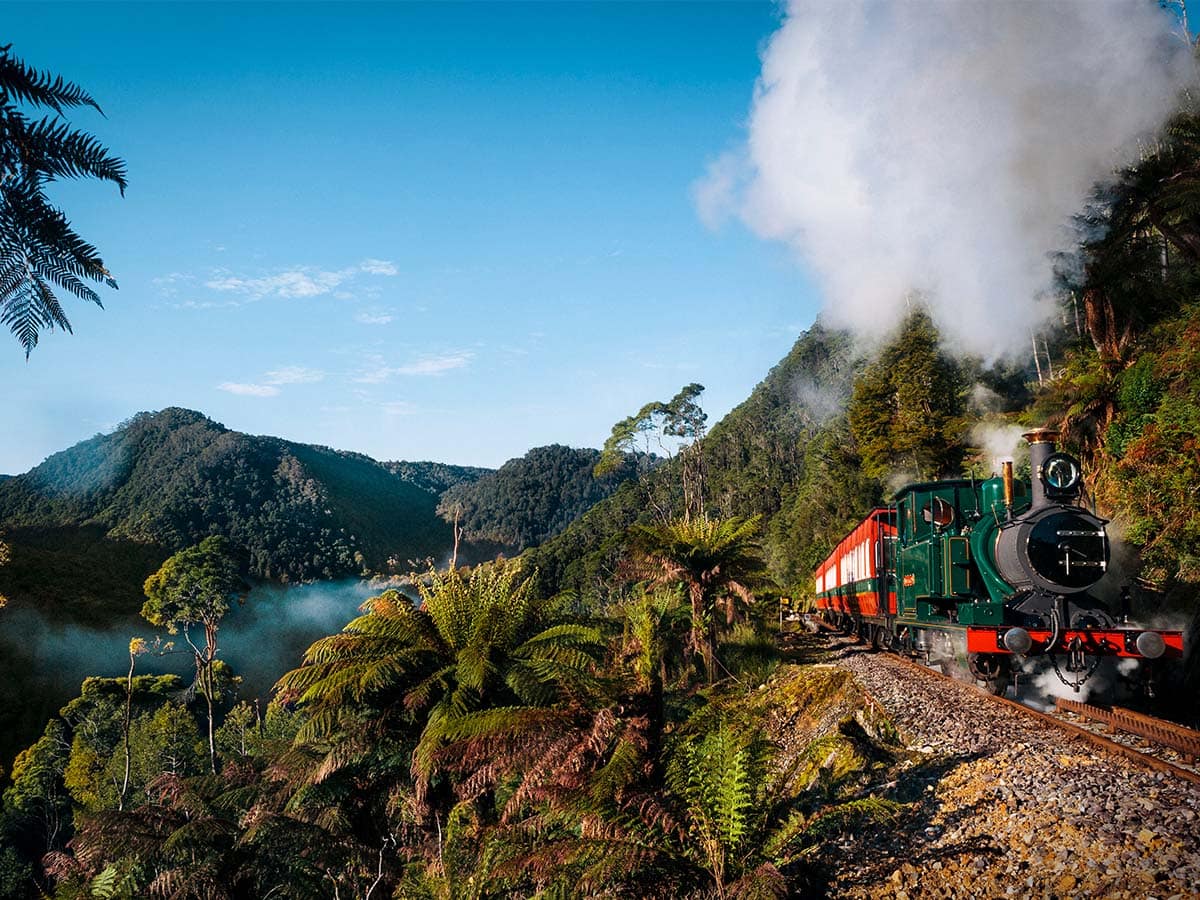
Lonely Planet has launched Amazing Train Journeys, a book spotlighting 60 incredible scenic railways around the world. Impressively, Australia has scored four mentions that span classic tourist rail journeys to regular commuter trains.
In an era of travel where we are more eco-conscious than ever, trains are the perfect way to slow down and see more. So, whether you’re trying to leave a lighter footprint, or simply appreciate the romance of the railway, here are four of Australia’s most amazing train journeys, as listed in Lonely Planet’s Amazing Train Journeys.
As the old adage goes, “It’s not about the destination, it’s about the journey”. And although it may be a cliché, it’s never felt truer than onboard one of Australia’s most luxurious trains. The Ghan is an Australian icon, cleaving the country’s Red Centre as it travels between Adelaide and Darwin.
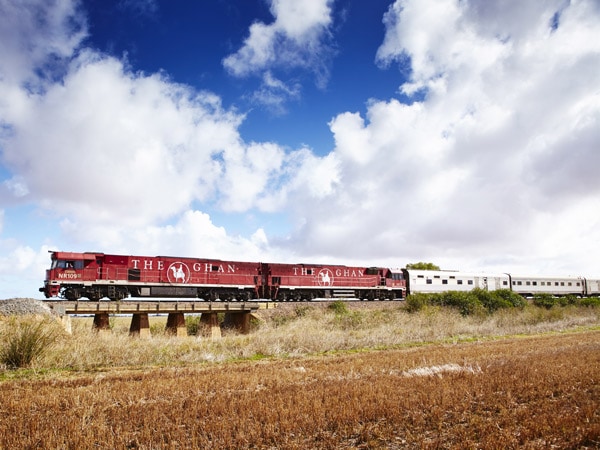
The Ghan is a locomotive with some serious history. (Image: Matt Munro/Lonely Planet)
Over three to four days (depending on the direction of travel) and nearly 3000 km, passengers will experience a cross-section of outback wilderness in complete comfort, from the onboard fine dining options to the Art Deco-inspired bar car that recalls the romance of rail travel. The Ghan is a locomotive with some serious history. Named for the Afghan Cameleers transporting freight around the country, the Ghan was constructed between 1878 and 1929. 2024 marks 95 years of The Ghan adventuring through the outback.
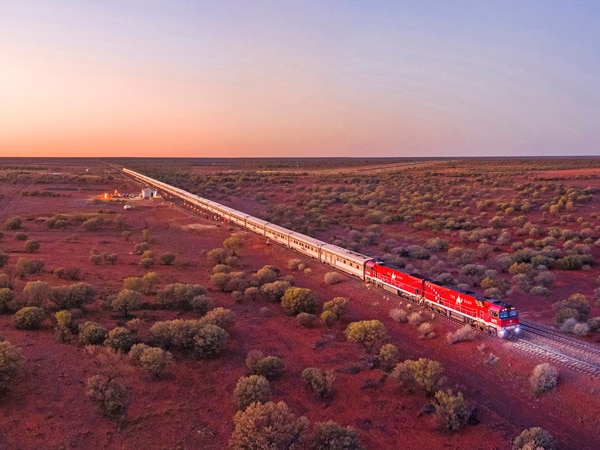
Embark on an exhilarating adventure aboard the legendary Ghan.
To Sydneysiders, this regular commuter train line may not sound special. But according to Lonely Planet, the views from the South Coast Line line that connects Sydney, Wollongong and Bomaderry on the NSW South Coast, are some of the country’s prettiest.
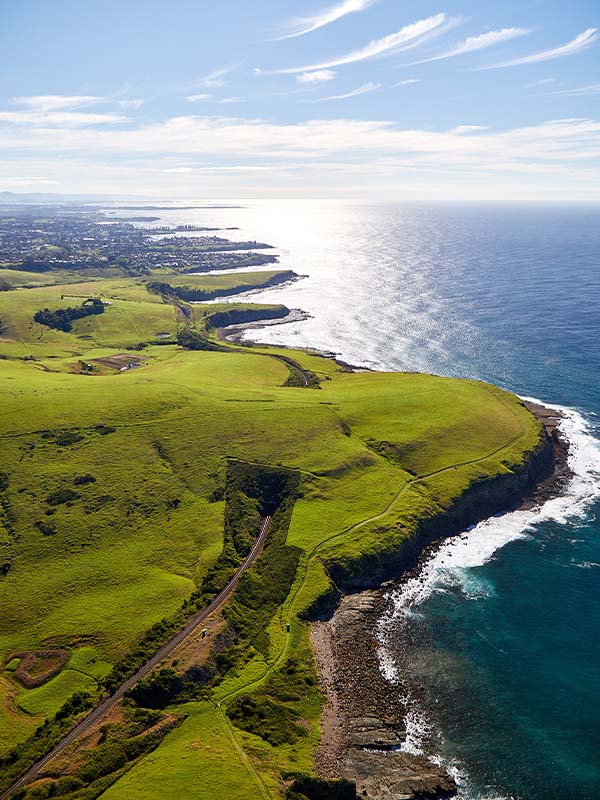
The South Coast Line is one of Australia’s prettiest commuter rail lines., (Image: State of NSW – Transport for NSW)
The train skirts the Royal National Park before dazzling views of the Pacific Ocean open up on the onward journey towards Thirroul. There are plenty of places worth stopping, whether at the pretty townships of Berry, or the beaches of Gerringong and Kiama to watch the whales migrate in autumn.
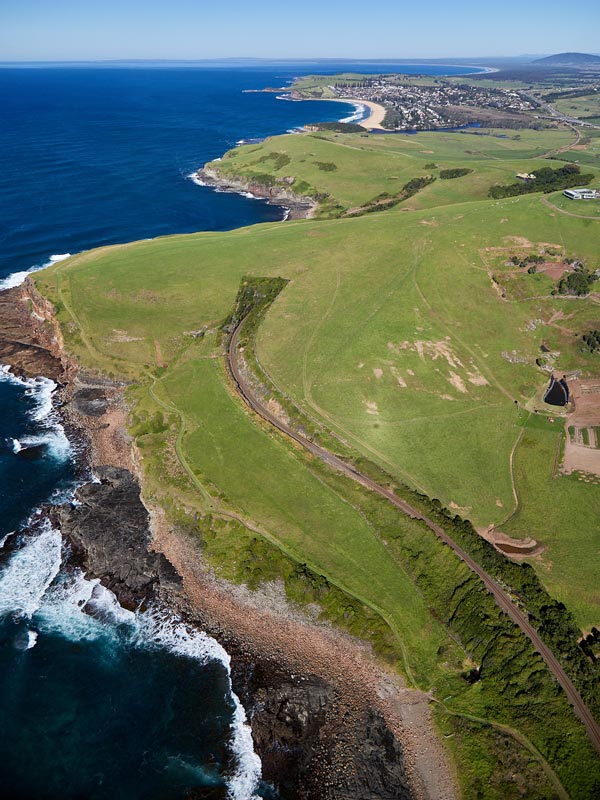
There are plenty of gems along this train route. (Image: State of NSW – Transport for NSW)
The West Coast Wilderness Railway in Tasmania is not just a scenic route, but a feat of human engineering. When it was built in the 1890s to transport copper to Strahan’s port from Queenstown, the task seemed near impossible due to the density of the terrain.
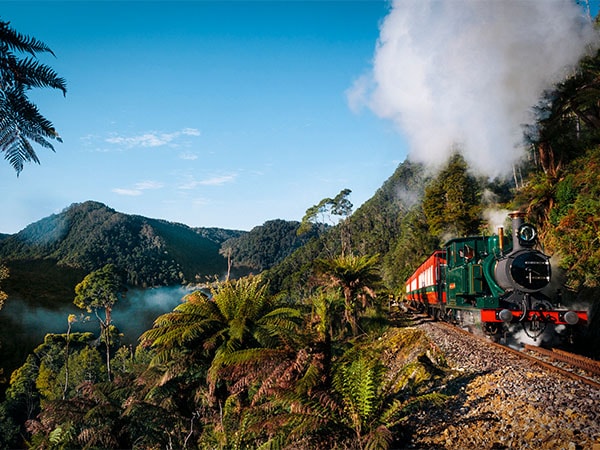
Steam between Strahan and Queenstown on the West Coast Wilderness Railway. (Image: Tourism Tasmania & Nick Osborne)
Now, riding the West Coast Wilderness Way couldn’t be further from the toil and sweat of the train’s mining history. Onboard the vintage steamer, you’ll chug through the rainforest as staff hand out glasses of bubbly. On the train’s outdoor balcony, the air is fragrant with Huon Pine and cool in the shade of the rainforest canopy. This is one for nature lovers, as well as the railway buffs, too.
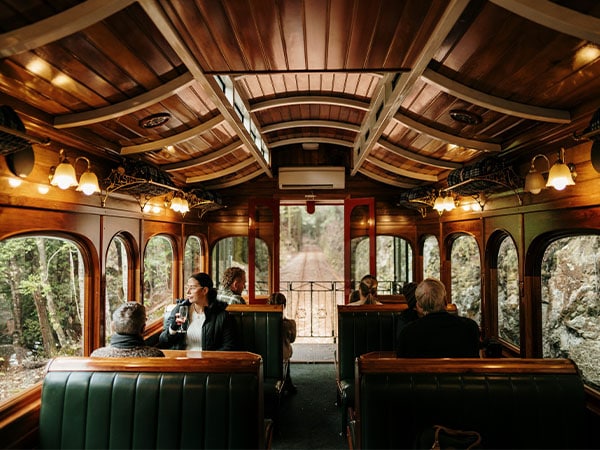
The luxurious West Coast Wilderness train passes through the temperate forests of Huon Pine. (Image: Tourism Australia)
Starting from Cairns, the 37-kilometre railroad to Kuranda was hand-hewn in the late 1880s by 1500 labourers using just picks and shovels. The only thing more impressive is the captivating vistas taken in on the train journey, from tropical rainforests to the tumbling waterfalls of Barron Gorge.
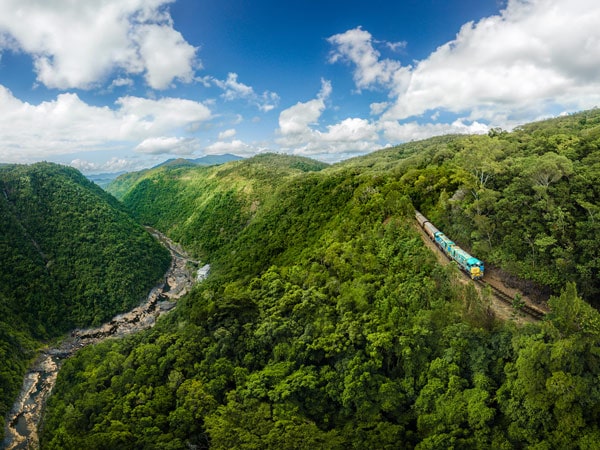
The Kuranda Scenic Railway is a must-see in Tropical North Queensland. (Image: Queensland Rail Travel)
Begin your journey with breakfast in an authentic antique train carriage at Freshwater Train Station, where you can enjoy views of the surrounding mountainscapes before you embark on an unforgettable jaunt through the tropics on the Kuranda Scenic Railway. Currently, Kuranda Scenic Railway is running weekend services only but will reinstate a full timetable from 2 March.
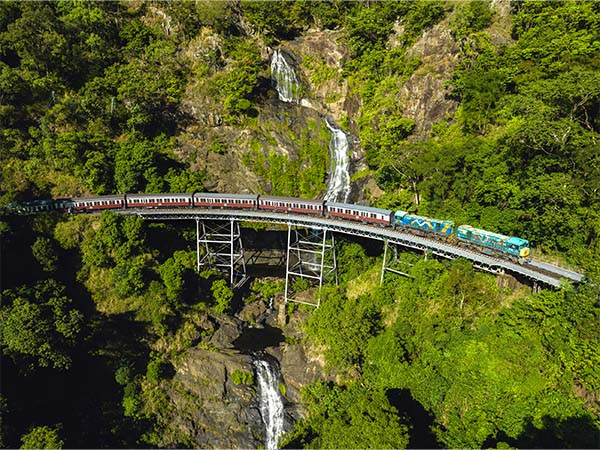
The Kuranda Scenic Railway takes in tropical rainforest and waterfalls. (Image: Queensland Rail Travel)
Thanks for all this hard work you have put in, we are recently immigrated from South Africa and after 2 1/2 years now getting family and friends visiting us and we need all information on things to do in Australia helps both us and the visitors.
Just back from a North Island and South Island train journey, magnificent,as are-the train journeys in Australia
Well done Elizabeth on your paper on Great Australian Train Rides
We were in Hobart for a Mens Barbershop convention in 2009. We decided to do a reverse trip around Tasmania and compare it to our honeymoon trip 30 years earlier . We bought our tickets for the West Coast Wilderness Railway in the Tourist Information Centre in Hobart where the staff advised us to purchase tickets to the first class carriage as there were comfortable seats instead of the economy class as the seats in economy were wooden slats ( consistent with the time when it was the main way to get from/to Strahan from/to Queenstown ) and if in economy we should bring cushions to sit on if we wanted a comfortable ride. I also suggest that anyone who is not familiar with the history of this area take the coach from Strahan to Queenstown as the video that was played on the journey was very informative about the history and also what to watch for on the return railway journey from Queenstown back to Strahan.